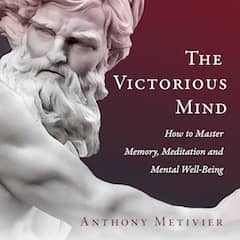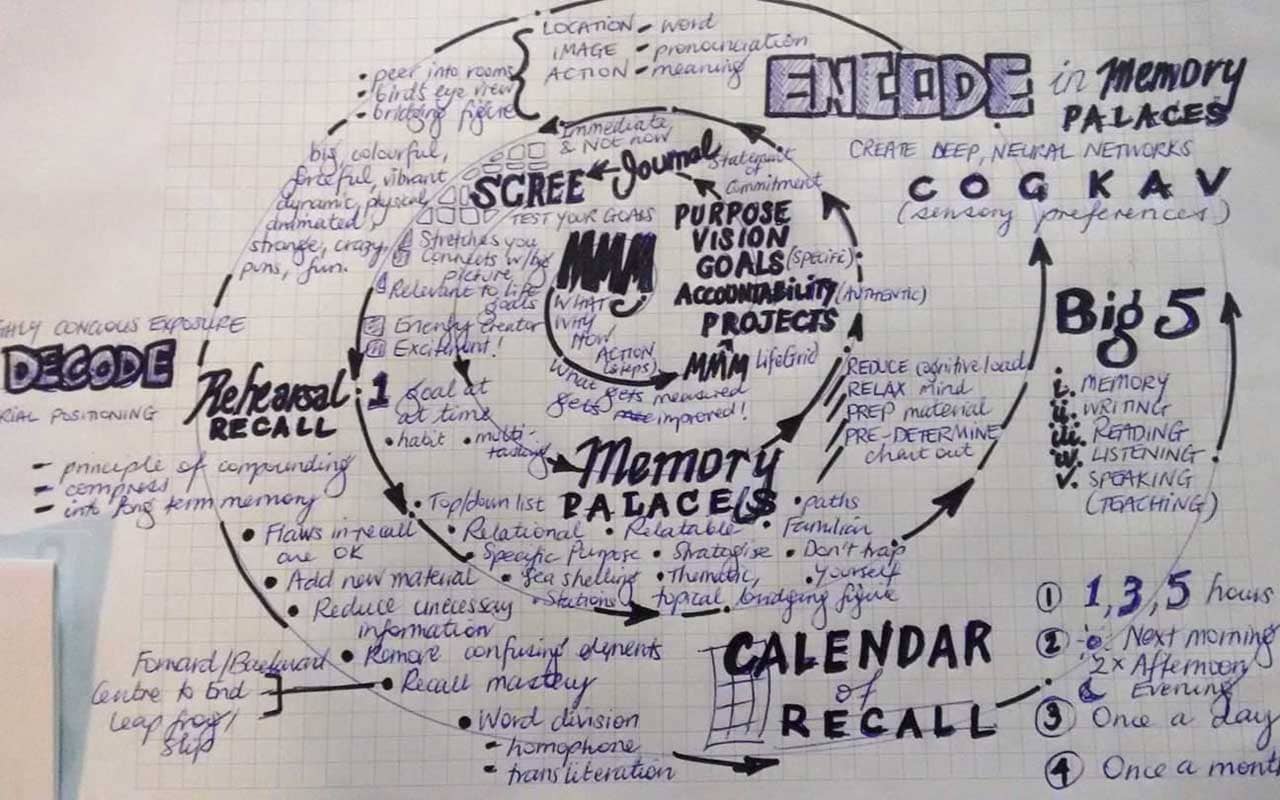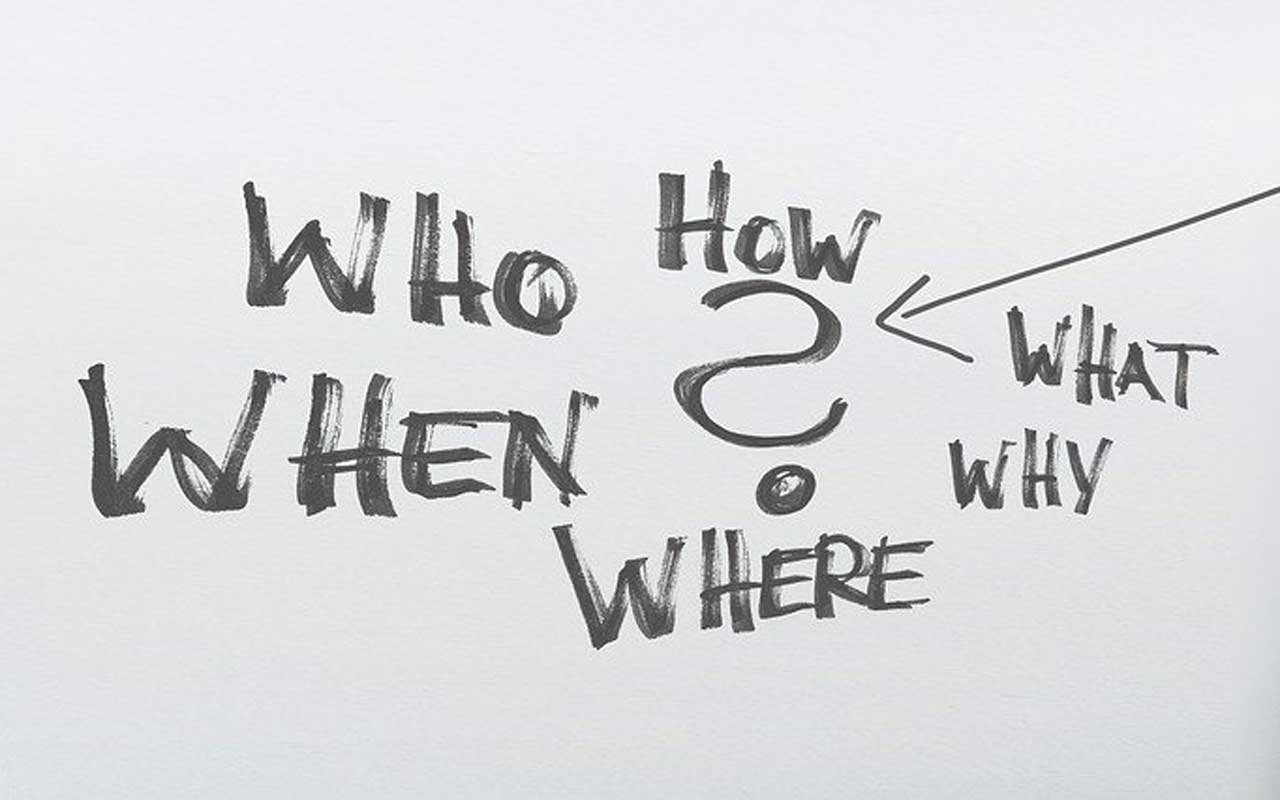Podcast: Download
Subscribe: Apple Podcasts | RSS

Depending on the situation, your answer might range from “pretty fast” to “way too long!” If you’re like many of my readers, you would like to learn how to think faster.
Today, we’ll stress test the idea of thinking faster with good old Ulysses Everett McGill from the Coen brothers movie O Brother, Where Art Thou? — otherwise known as Dapper Dan.
Dapper Dan thinks he’s sharp. Thinks on his feet. Gets him and his fellow escaped convicts out of trouble… right?
Not so fast!
As much as Dapper Dan might believe himself to be a quick thinker, he’s just not as smart as he thinks. Or as smart as he wants everyone else to believe.
Here’s one of the big problems with the desire to think faster: a lot of people want to have faster thinking because they’re concerned about how they look to others. They’re not so worried about accuracy of thinking — they just want to “think fast.”
So instead of going down the Dapper Dan road of quick (but mistaken) thinking, let’s look at how to process information faster AND more accurately.
Here’s what this post will cover:
- Why Do You Want to Think Faster?
- WRAP Your Way to Faster Thinking
- 9 Factors That Slow Thinking
- Think Fast! 4 Ways to Improve Your Speed
- Questions to Ask for Faster Thinking
- 9 Tips to Help You Think Faster
- Book Recommendations
- How to Be a Quick Thinker
Ready to learn how to think faster? Let’s get started.
Why Do You Want to Think Faster?
One of the very first questions you should ask yourself is, “Why?”

Are you interested in accuracy, or are you motivated by the Dapper Dan approach? The problem with the latter is that it tends to lead you into trouble.
Even if you know the movie O Brother Where Art Thou? you might not know it’s an adaptation of The Odyssey. Looking back at the ancient Greek epic poem, you’ll notice that Ulysses wasn’t that intelligent of a fellow, but boy could he talk the talk.
Ulysses seduced people into thinking he was a lot smarter than he was in reality, and it got him into a lot of trouble (including needing to take a trip to the underworld to try to get himself out of trouble).
One of the important things we learn from The Odyssey is how to make better decisions by not being like Ulysses. We learn how not to “Dapper Dan” our way to bliss and pretend we’re smart.
Instead, we can learn how to think faster in a legitimate way.
So after you decide whether you want speed (Dapper Dan and Ulysses) or accuracy (the Magnetic Memory approach), list out why you want to think faster.
Do you want to look better to others? Or do you have tangible performance needs, like:
- Time limits on your exams
- High demands of your sports team
- A decision-based profession
Rather than worrying about what someone else thinks about the grades you get, focus more on getting good grades later on. A good grade’s function is to qualify for more opportunities to study for additional qualifications (if that’s what you want).
It’s the opportunity to learn more and become progressively smarter over time.
Let’s quickly look at our other examples. If you’re able to think fast on the field, you perform better. And if you’re in a decision-based profession – like a doctor or lawyer – you want to be able to think faster on your feet and think accurately.
The vital part is combining and following those avenues of connection to create stable landing pads in the future. It’s not about the speed — it’s about the landing and how hard or soft it is based on the integrity of the thoughts you’ve compiled along the way.
Now you know why you want to think faster, let’s take a look at a model of decision-making that can help you get there.
WRAP Your Way to Faster Thinking
Rather than the Dapper Dan approach to thinking, I prefer to think slower, more thoroughly, and W.R.A.P.
But what does W.R.A.P. mean? Earlier this year, I read the book Decisive by Chip and Dan Heath, on Olly Richards’ recommendation.
In Decisive, the authors talk about how to make better decisions, faster and more accurately. In their model, W.R.A.P. stands for:
- Widen your options
- Reality test
- Attain distance
- Prepare to fail
Ever since I read the book, I’ve been using the W.R.A.P. formula for everything I do in my life. I think I’ve been good at a version of that throughout my life, but once I memorized it in one of my memory palaces, I’ve been using it ever since.
Next, let’s look at some of the factors that might be holding you back.
9 Factors That Slow Thinking
You’ve decided you want to think faster and more accurately. But what if hidden factors are standing in your way?
Let’s break down nine things that might hold you back from quick thinking.
1. Lack of Preparation
One of the factors that slows down thinking is not understanding how to prime.
But what is priming? In a nutshell, it’s a phenomenon where you respond differently to a stimulus based on how you experienced that stimulus previously. The stimuli are often at least conceptually related.
I listened to a presentation by Damien Patterson when he talked about this amazing way he used to pass exams in school. Then he went on to immediately denigrate his approach by saying, “this isn’t the most scholarly way of doing things.”
I went up to him during a break in his presentation and had a quick conversation with him. I told him he should congratulate himself for doing what speed reading experts call priming.
I made him aware that it was a major industry that teaches people how to read faster — and that’s why he got top grades instead of the more diligent students.
Those other students were fumbling around and not using proper learning skills. They didn’t have the thoroughness of accelerated learning techniques to get their studying done right the first time.
When people don’t prepare properly and invest in accelerated learning techniques (like priming), it slows down their ability to learn. And even for the people who do, another factor that slows their thinking – and the value they get out of the material – is that they aren’t thorough about taking the course.
2. An Overflowing Calendar
How many people do you know who schedule time just to think?
The answer is probably none (or not many). But this is one of the essential factors that will help you think faster.
Let me ask another question: have you had your thinking time today?
This is not a hypothetical question. Have you literally checked off the box on your to-do list that says, “Yes, I did my thinking time.”?
If not, this is a problem. If you want to speed up your thinking – really accelerate it – schedule some thinking time.
At the end of the day, if you’re not making time to think, you’re not going to be able to practice it.
3. Substance Abuse
Much like the engine of a vehicle, the human body is not made to run on junk.
Smoking, drinking, and other types of substance use and abuse will severely slow your thinking. By keeping your body clean and efficient, it’s able to use the fuel you give it.
For example, if you drink, you make the liver work harder to process out the alcohol. And if you smoke, it’s like clogging up the air filters in your car’s engine.
Instead, keep your machine running clean.
4. Mental and Physical Injuries
Similarly, other kinds of injuries also impact your ability to think faster.
Back at the beginning of 2020, I hurt my shoulder. It took me a while to get back to the gym, and while I was working through the injury it impacted my thinking speed.
Harvard Health shared findings showing that “moderate-intensity exercise can help improve your thinking and memory in just six months.” There are both direct and indirect impacts: physiological changes as well as indirect action on the brain itself.
Both physical injury and brain injury can slow thinking. When I developed bursitis in my shoulder, I noticed a dramatic reduction in my memory capacity. I did a podcast interview and made a mistake in one of my memory demonstrations.
Now, this might not seem like a big deal to some of you, but I very rarely make mistakes when it comes to memory. I’m sure it came from the injury because I was very slow and foggy at the time.
Once I could get through physical therapy and get back to the gym, I felt so much sharper. It was like night and day.
5. Behavioral Health Issues
Depression is also a significant contributor to delayed thinking.
Many people who suffer from depression report symptoms of “brain fog” as part of their experience. This cognitive dysfunction can mess with your thinking speed and your reaction time, memory, and executive functioning.
But it’s not just depression that can be an issue. Medications can also slow your thinking, as can normal aging.
6. Poor Nutrition
Think back to the car analogy we used earlier. Proper nutrition is like giving your vehicle the right type of fuel so it can run smoothly.
When you consume too much sugar, dairy, wheat, and other allergens, it’s terrible for your brain and your speed of thinking.
No one diet will work for everyone, so part of your research into how to think faster will involve trying out elimination diets, rotation diets, and just generally experimenting to see what type of foods make you feel (and perform) your best.
I personally cleaned up my dietary act. I got rid of the booze, wheat, sugar, dairy… and my life changed. My brain got so much sharper. So much faster. And my memory improved, too.
I know we can’t make everyone do the same, but I’ll spend the rest of my life trying to convince you why it’s so important.
7. A Lacking Lexicon
This one might surprise you: many people can’t think faster because they don’t have a large enough vocabulary.
When I interviewed Jesse Villalobos – a Magnetic Memory student – on my podcast, he basically said he loves that I use big words because it helps with his thinking.
Coming back to the idea of speed reading, there’s new research debunking it. Studies show that the only way to read faster is to have a more extensive vocabulary and significant knowledge of the field.
I dig deeper into the idea in this post about speed reading.
8. An Excess of Edutainment
A lot of people ask me, “Wheres the meat?”
But what does M.E.A.T. mean? Here’s how it breaks down:
- Meaningless
- Edutainment
- Absurdly
- Thriving
It seems to be thriving a lot more on the internet. Instead of aiming to deepen their knowledge on a subject, people think, “Oh, I just want to look for short videos that are all cut up and spread across a couple of hours, so I don’t have to focus or concentrate or engage with the knowledge.”
Don’t be one of those people.
9. Digital Amnesia
I think the kingpin of all of these factors is digital amnesia.
I can’t tell you how often viewers will tell me they wish I made shorter YouTube videos. But if they took a second to look around, there are plenty of shorter videos on the Magnetic Memory Method YouTube channel.
They’re already showing signs of digital amnesia because if they can’t find short videos from me, then there’s something going on with their field of perception. They’re looking on devices that hide half the content.
And this is not how intelligent people go about studying things. You need the largest possible screen so you have the biggest field of perception possible — this is how to eliminate digital amnesia.
The smaller your field of perception, the less room you have for the seeds of detail that grow into knowledge.
Here’s where the Dapper Dan effect comes back in: “I look cool because I have my tiny little device.”
My advice? Get away from the influence of this small device as much as you can. The convenience is killing so many people and ruining their brains. It’s also destroying their ability to see information in context.
It’s Drama Theory 101.
The shorter the content you consume, the more often you have to “turn on the engine.” If you constantly stop and start the engine of content, you end up with cognitive drain.
But what can you do instead? Train yourself to sit and pay attention! Grab your pen and paper, and go through our notetaking training:
One of the biggest challenges we face in our quest to think faster is the accumulation of the nine factors above.
So instead of letting them slow down your thinking, let’s look at what you can do instead.
Think Fast! 4 Ways to Improve Your Speed
We’ll get more into how to incorporate the W.R.A.P. approach to faster thinking, but first, let’s tackle an important way to make sure everything you’re learning sticks.
1. Implement Immediately
The first thing to do as you’re learning how to think quicker is to speed up your implementation.
One easy way to do this? Immediately after you read this post, put all of the recommended books into your online cart at your favorite book retailer and hit submit.
Why? Because you’ll follow the speed of implementation rule — every minute that goes by where you don’t take action, it gets less and less likely you ever will.
This will guarantee you never think as fast as you want because you’ll never get to the next stage. Instead, speed of implementation is a principle for thinking faster because it helps you make decisions as quickly as you can.
And my strong recommendation is to only read in physical form, especially books that contain any kind of information of substance.
For example, if you see a recommendation from a reliable source telling you what to do to fix a problem, don’t overthink it. Get your priorities straight, and then follow the advice within 5 minutes of getting it.
Then, when the book arrives, read the whole thing right away.
2. Get S.M.A.R.T.E.R.
Earlier in this post, I mentioned my friend Damien Patterson. He believes in L.U.C.K. — which comes from one of his books.
- Learn
- Using
- Correct
- Knowledge
And by using this correct knowledge, we get S.M.A.R.T.E.R.
- Serious
- Mature
- Absolutely
- Ready
- To
- Embrace
- Reality
The reality is, 6-minute video clips are not going to help you think faster. Instead, they train you to think within a small field — and you cannot expect to think faster if you reduce the field in which thinking happens.
You have to expose yourself to longer forms of content to see “thinking out loud” demonstrated and think along with it.
I get frustrated with so-called education “experts” who praise the “snippetization” of content because it gets more people through to the end of courses. But who cares how much content you get through if it’s eroding your ability to think coherently and consistently across time?
In the real world, you need to demonstrate and capitalize on your ability to focus and concentrate.
If not, reality will smack you, and you’ll hit the ground so hard you don’t know what hit you. Your brain is rotting every minute. We’re all dying. It’s just a fact of being alive, and recognizing that fact is part of having good critical thinking strategies. And you can accelerate the death of your brain by constantly exposing it to snippets of content.
Or you can increase your attention span by giving your brain longer content to focus on! You know which of those approaches I recommend.
3. Exercise Your Brain
To accomplish this increased attention span, you need brain exercise.
One way to get brain exercise is by thinking as correctly as possible — to do the best you can in the moment. Do it regularly, frequently, and in a way that my mentor Tony Buzan would.
He says, “follow the rules and the rules will set you free.”
To me, what it means to be free is to study Frequently with Relevant information that improves your life in a spirit of Experimentation and Entertainment.
That’s where memory techniques come in. Practice frequently with relevant information that isn’t compressed and squished into 6-minute snippets. Find longer content that allows you to think out loud — all in the spirit of implementation (and in an entertaining way).
4. Set Aside “Thinking Time”
No matter what condition you face – be it trauma to the brain or body – thinking must be practiced.
But we all know how busy life can be. How do you set aside time to think, with all the other things you have going on?
Let’s take a look at a few different approaches.
Digital Fasting
You have to actually set time aside, not just think about it or promise to do it. And one great approach for setting aside time to think is to do a digital fast.
There are two kinds of digital fasting:
1. Walkabout Digital Fasting
For this walkabout, you will leave your house with no device whatsoever. Maybe you take a small journal to write in. But the most important thing is to physically separate yourself from technology.
You might go to a cafe or your favorite park. Choose somewhere that you can do nothing but think. You can also choose to bring along a physical book to read during your fast.
You might consider what to think about on your digital fast, or you can allow yourself time to think about other things as well.
The most important thing is to set aside time for U.S.S.R., or Uninterrupted Silent Sustained Reflection.
2. Creating Digital Borders
I used to avoid Instagram completely. But I finally figured out a way to enjoy the platform without getting trapped in it. Here’s how. (You can learn more about this approach in Nir Eyal’s book Indistractable.)
I open Instagram one time per day, or less often. I have a time limit set (there are apps and phone settings that will limit the amount of time you can spend, and I recommend using them) and don’t go beyond it.
I curate my feed so I only see posts about language learning, philosophy from the stoics, and other knowledge-based content.
I go in, I fart around, post what I want to post, and then leave for the day. And the dopamine spike I get from using the platform is more significant than if I was always in there refreshing.
It’s a bigger payoff because I’ve earned it.
This is a weaker form of digital fasting than totally avoiding digital content, but it can help ease you in.
Journaling
I love journaling because it’s a fun way to digital fast.
I really like Yanik Silver’s Cosmic Journal. It’s a beautiful art object that involves randomness exercises within a structure.
Rather than getting your dose of randomness from digital sources, you can get it in a way that’s compelling and directs your thoughts in different ways.
And even if you don’t choose a specific guided journaling practice, just spending time with your thoughts and writing them down is also excellent.
Mind Mapping
Another technique I highly recommend is Tony Buzan’s Radiant Thinking.
I’m still a student of mind mapping myself, but radiant thinking looks like this:
It radiates out of a central image and also radiates internally — and arrows point around from different topics.
Mind mapping is a way to train yourself to think faster, but you need to set time aside to do it. That’s why mind mapping is such a great way to get in your digital fasting time. It’s a win-win.
This past year, I’ve done so much mind mapping that people might think I’m a little weird. I go out with these giant pieces of paper and a big stack of colored pencils. And I don’t care what people think because I’m not Dapper Dan-ing myself.
Instead, I’m focused on just the outcome, not confusing activity with accomplishment. The key is to focus purely on how activity leads to accomplishment, and making sure those activities truly lead to your desired outcomes.
Feynman Technique
Another way to think faster is to learn the Feynman Technique.
This video shows how to apply an advanced version of the technique:
You need to craft the best possible approach that makes sure your activity leads to accomplishment. You want to avoid the Dapper Dan problem and the confusion of activity-as-achievement.
Now that you have these four ideas in your head let’s look at how you can create a system that helps you ask better questions.
Questions to Ask for Faster Thinking
As you get deeper into your quest for learning how to process information faster, you’ll want some heavy-duty techniques.
The following will help you create a little system in your head that enables you to ask better contextual questions.
Contextual Awareness
From the time we are young, we’re taught to ask the 5 Ws (and 1 H):
- Who
- What
- Where
- When
- Why
- How
As you learn how to think faster, you should always have these contextual questions in your mind. There’s a little bit more finesse with the “who” part, but some of the others are relatively simple.
Let’s break down two examples, using “what” and “when.”
What?
Ask the following questions:
- What is it?
- When was it created?
- What is its size?
- What are its dimensions?
- What are its parameters?
- What function does it have?
- Where was it created?
When?
We don’t just want to ask “When?” but we want to ask “When” in terms of “What is the actual history by which our understanding of it was built?”
So you don’t want just to say, “Well, they built this particular device in 1812.” Instead, you want to go much deeper — you want to think about the story that tells how we know that history.
For example, let’s take the Industrial Revolution.
First, we need to know when it was generally said to come into existence. But we also need to know what the prevailing tendencies were before its inception that enabled it to thrive? What’s the genealogy?
This would also include the key players. If you want to examine the development of schools, you need to look at education for the previous 100 years.
By incorporating the 5 Ws (and 1 H) as you read, as you have discussions, and as you build up your ability to think faster, the questions will help you finesse out what matters.
This will help you ask the best possible questions to think better and faster. It’s not about the conclusion. It’s about the quality of the questions.
Next, let’s examine the other kind of awareness you want to practice.
Benefit Awareness
This type of awareness is like “Who?” plus.
When you’re talking about who created something or who said something, ask yourself, “To what benefit?”
Who gets the benefit? Whom does this serve?
As Michel Foucault stated, the definition of power is the ability to conduct the conduct of others. Or, similarly, William S. Burroughs said, very brilliantly, that control seeks to control control.
When you seek the truth, take a moment to check if someone fought long and hard to make that thing true for their benefit. This is a problem amongst scientists because they sometimes base conclusions upon who benefits — but it’s not a problem with science itself.
That’s because science is a tool. It’s the collection of evidence that either confirms or denies a hypothesis. And it helps us make better hypotheses so we can better confirm or deny our ideas about things.
You always want to understand that many people can’t embrace reality because they’re not smart enough yet. This is why it’s vitally important to be S.M.A.R.T.E.R. (Serious Mature and Ready To Embrace Reality).
Benefit awareness will help you cut through the noise and think faster.
And with enough awareness, you can have the best of both worlds. You can have useful philosophical thinking tools and avoid your own cognitive biases.
If you’re stuck in Dapper Dan mode, worried about how people perceive you, then it will be more challenging. But if you’ve got the Dapper Dan problem in check, you’re already ahead of the game.
If you need more help, I put together a special audio presentation called “How to Think” that you should enjoy.
Finally, let’s look at nine different recommendations that will help you with quick thinking.
9 Tips to Help You Think Faster
Before we dive in, a word to the wise: using just one of these tips will help you learn how to be a quick thinker, but you’ll get even more out of this post if you start to combine them.
Which one(s) will you choose?
1. Start a long-term thinking project
The first tip is to have both a long-term project and a memory vision statement. Not sure how that vision statement should look? Here’s a video that will help:
My current long-term project is to understand Hermeticism and memory tradition. I’ve been reading many books as part of the project, including Frances Yates’ book Giordano Bruno and the Hermetic Tradition.
For your long-term project, I recommend no fewer than 10 or 15 books on a particular subject.
These learning projects help with thinking faster because the bigger your field of vision and understanding is, the more the seeds of knowledge have room to grow.
To take action on this tip, watch the video above, and create your own learning vision statement.
2. Join a discussion group
The next tip helps you both think out loud and experience thought in action.
Online discussion groups are okay (especially right now), but when it’s safe again, go and meet other people in the real world. You’ll see thinking out loud demonstrated to you and observe your own thinking out loud in the context of the people hearing you.
Coming back to the idea of the short 6-minute videos, you’ll get a small portion of the organic action (where soundwaves manipulate the physical structures of your inner ear) but it’s just not the same as being together with people.
Sitting together and discussing, picking up interrupted conversations, it’s all part of the extended thinking that you must practice to think faster.
I try to be a part of a discussion group once a week, and I notice that my thinking is sharper and my mind is more vivid when I do. It has a lot to do with the chemicals created when our brains are with other brains.
To take action on this tip, find an in-person or online discussion group around your topic of choice.
3. Meditate every day
Meditation is a great way to think faster, especially if you memorize a text and make it part of your meditation. What text you choose is up to you.
I also meditate in silence, but my preference is to meditate by reciting texts (especially verses in Sanskrit).
This is very powerful because your meditation allows you to concentrate for an extended time and in a way that produces semantic and echoic material. The muscle memory in your mouth is now linked together with the production of thought.
Instead of fighting against ideas, allow them. I spent a decade fighting my thoughts, and then I learned how to sit just to sit — it’s so much better to let the ideas that come up just flow.
I’ll often meditate with a journal or a piece of paper. That way, when a thought arises, I can write it down and then let it go.
And I also find that you get much more focus at the beginning of meditating on a particular text. After a while, a text’s focus power tends to wear out a bit.
To combat this, you can either pick up new material or recite the text in a different order each time. When you rotate your texts, everything gets primacy and recency in the serial positioning and helps them not wear out as fast.
To take action on this tip, choose a single short text to recite during daily meditation.
4. Track your dreams
You want to track your dreams. But why?
You’ll focus on whether you can trigger greater awareness of the present moment by remembering your dreams. When you remember your dreams with more accuracy, depth, and volume, it exercises your memory.
You want to be able to 1) remember your dreams, and then 2) increase the depth, duration, and volume of recall, which triggers lucid wakefulness.
As you begin to practice recalling your dreams in a dedicated manner, you’ll start to realize that the distinction between lucid dreaming and dream recall may be suspect. And you may begin to become more aware of when you’re daydreaming.
Being in a fantasy is being in a fantasy, whether you’re awake or asleep.
But is there a difference between sleep dreaming and wakeful dreaming? The distinction is that our wake-time fantasies tend to be a lot more about the past we think happened, an alternate version of the present, or something about the future.
If you start to track your dreams and associate them with your dreams scientifically, you’ll want to learn proper associative thinking with dreaming. You can also begin to examine your dreams to see if and how anxieties may manifest in your dreams.
To take action on this tip, keep a journal beside your bed and make it a point to write down every dream you remember as soon as you wake up.
5. Incorporate diffusion
Another great way to think faster is just to let things go or let them percolate.
Here are some of my favorite approaches to practicing diffusion:
- Go for a walk
- Practice digital fasting
- Take cold and hot showers
- Apply your skills in other areas
- Take a philosophy course
- Write fiction
Cold showers are a great tool to increase your discipline. And by switching over to using your skills differently, you can give your brain a break. If you write a lot about non-fiction topics, take a break by switching over to fiction. Change up your mode.
In all these cases, thinking speeds up because you’re practicing thinking in different ways.
I highly recommend reading Alex Pang’s book Rest, where some of these ideas came from.
To take action on this tip, pick one of the tasks above and practice diffusion independently.
6. Cultivate body awareness
Another tip for thinking faster is to be aware of your body. Charisma on Command has a great YouTube video about how to think 10x faster under pressure that I suggest you watch.
That video includes one great tip about how to send a signal to your body so things slow down and calm down so you can think.
When a lot of people get stressed, they start to clamp up. But this just causes your brain to get paralyzed — if you can relax instead, it will help you think faster (and better).
To take action on this tip, pay attention the next time you get stressed. Do you get tense? If so, take a deep breath and see if you can relax instead.
7. Avoid analysis paralysis
This post has been a fun way to learn how to think better… think, think, think, think. But there’s a trap we need to learn how to avoid.
You don’t want to get into analysis paralysis. That’s what happens when you overthink something and mentally rotate it one thousand ways and never take action.
So how do you get out of analysis paralysis? The first step is to acknowledge the issue, revisit W.R.A.P., and then segment your decisions.
Have you widened your options too much? Have you reality tested for too long? Have you attained too much distance? Do you need to get closer?
And if you find yourself overthinking your Memory Palaces, here’s a video about how to fix it:
To take action on this tip, give yourself a deadline to make whatever decision is in front of you.
8. Just get started
This tip is sometimes easier said than done. But you have more time than you think — because many people treat time incorrectly. They make it a problem when it could be the solution.
You accrete value over time when you practice thinking (and carve out the time to do so). The value comes when you’re consistent.
To take action on this tip, think F.R.E.E. (frequent practice, relevant thoughts, with experimentation and entertainment).
9. Create the Rhizomatic Effect
Finally, use memory techniques to create what’s called the Rhizomatic Effect.
Rhizomes are the roots that run deep and interconnect plants of a similar species. Ideas and memories can be thought of in the same way: interconnected and self-replicating.
When you use everything you learned here today, you will end up with aha moments that just happen. “Aha! This connects with that. And that connects with that.”
Do you think you could think faster if you could connect things in your memory? You bet! You want your thinking to be decentralized so it can spontaneously come up with great ideas all the time, from all over the place.
That’s what a good memory palace network can do for you if you use one and fill it with good stuff.
To take action on this tip, start to practice all the information included in this post. There’s no instant formula for success, but with consistent practice, you’ll begin to have those aha moments.
As Magnetic Memory Method readers know (especially our strategically slow readers), no comprehensive post would be complete without a list of some of my favorite books on the topic.
Book Recommendations
I’ve mentioned each of the books below in this post. Here’s a bit more about each one and why I recommend them as you learn how to think faster.
Decisive — Chip & Dan Heath
I mentioned earlier that this book is where I learned the W.R.A.P. model (Widen your options, Reality test, Attain distance, and Prepare to fail).
This book will help you make better, faster, and more accurate decisions. Remember, it’s a model I’ve used ever since I read the book.
As the authors say, “Decisive offers fresh strategies and practical tools enabling us to make better choices. Because the right decision, at the right moment, can make all the difference.”
Indistractable — Nir Eyal
If you would like to know more about controlling your attention and choosing the things that are going on in your life, get yourself a copy of this book.
It’s a quick and fun read, as well as being science-based. It even has a cool device in the back that I highly recommend.
The author asks, “In an age of ever-increasing demands on our attention, how do we get the best from technology without letting it get the best of us?”
I also interviewed Nir for the podcast, where we discussed how to create an indistractable life (and techno-panic-free focus). The interview is a masterclass in how to remove distractions.
Decoding Your Dreams — Robert Langs, MD
I spent a lot of time with the author of this book and read a substantial percentage of the books he wrote.
This book talks about dream interpretation in a way that’s not commonly discussed. Rather than a giant index of “what it means when you dream about falling off a cliff,” it gives you a means of testing why you respond to your dreams in the way you do.
This book teaches that, “Dreams — once you learn how to interpret them — are actually an extraordinarily reliable commentary on the way you live your life… you can make sense of the inner truth concealed in your dreams.”
The Victorious Mind — Anthony Metivier
I would be remiss not to mention my book that covers how to stay focused. The Victorious Mind helps you learn to free your mind and master your memory.
The book blends detailed step-by-step instructions with scientifically proven practices, including how to craft and use your own Memory Palace to help you think quicker.

Ready to think faster, today and every day?
How to Be a Quick Thinker
With the information you learned today, you can avoid the Dapper Dan trap and think fast (and accurately). Rather than flailing around and using flashy tricks to get yourself out of trouble, you can think on your feet and do what’s best for you and your memory.
You know why you want to think faster, how to avoid the nine factors that slow down your thinking, four ways to improve your thinking speed, as well as the nine tips we just covered.
So what’s next?
Now it’s time to put what you learned into action. You can’t do everything at once, but practice the speed of implementation rule and put at least one thing into use right now.
And if you want to learn more about how to think faster, pick up your copy of The Victorious Mind and permanently kick Dapper Dan mentality to the curb.
Related Posts
- 11 Benefits of Critical Thinking That Rapidly Improve Your Life
Critical thinking provides so many benefits. But did you know there's more than one kind…
- How to Think Logically (And Permanently Solve Serious Problems)
Learning how to think logically can be challenging. This post removes the challenges and show…
- Independent Thinking: 7 Tips On Becoming An Individual Thinker
Developing independent thinking doesn't have to be a hard task. These tips reveal how easily…



















